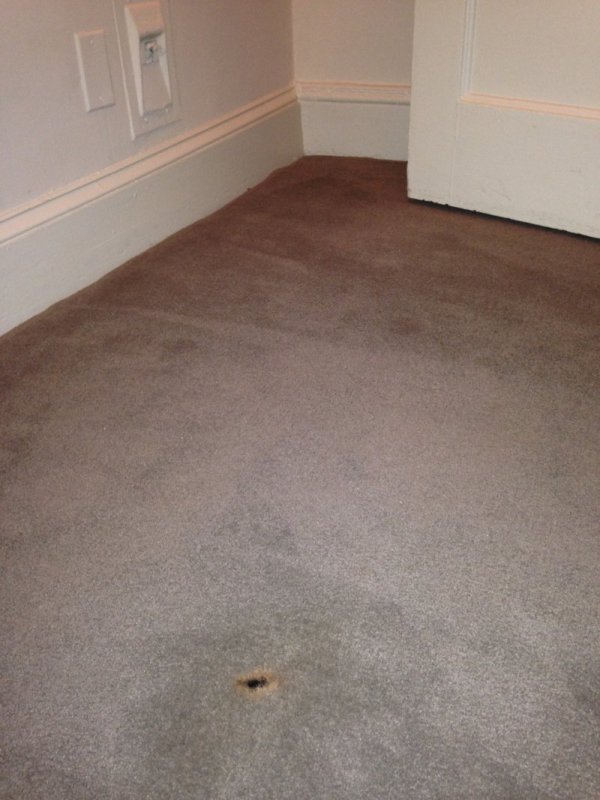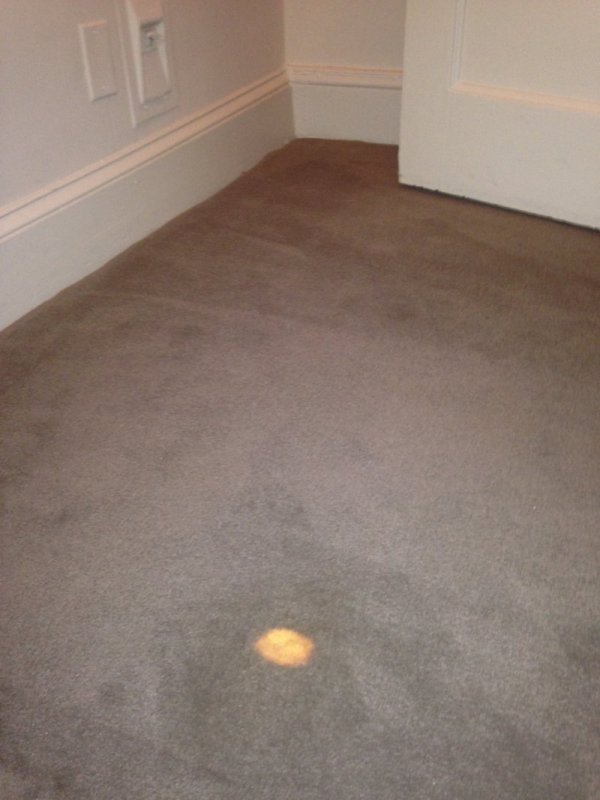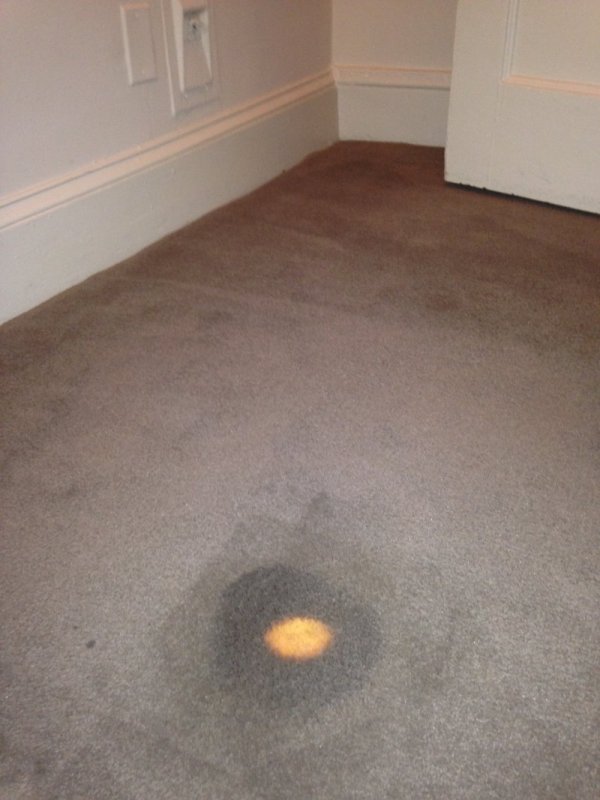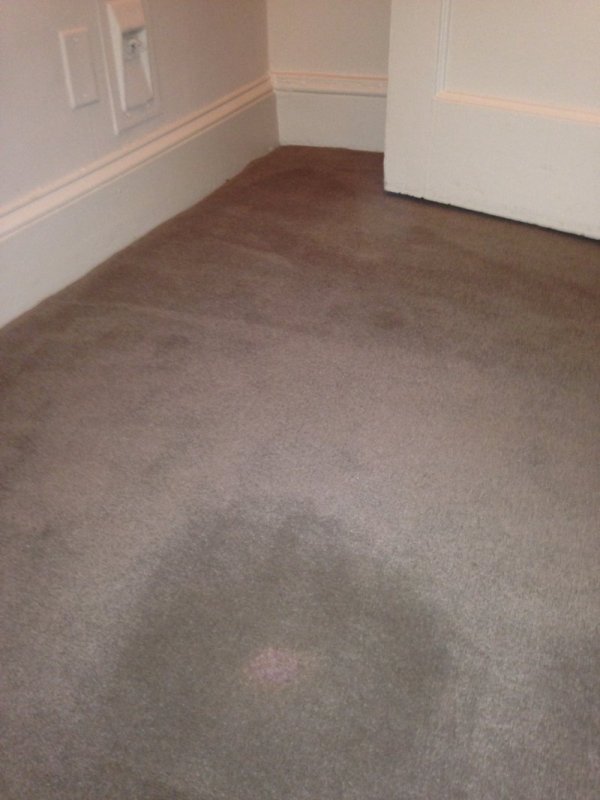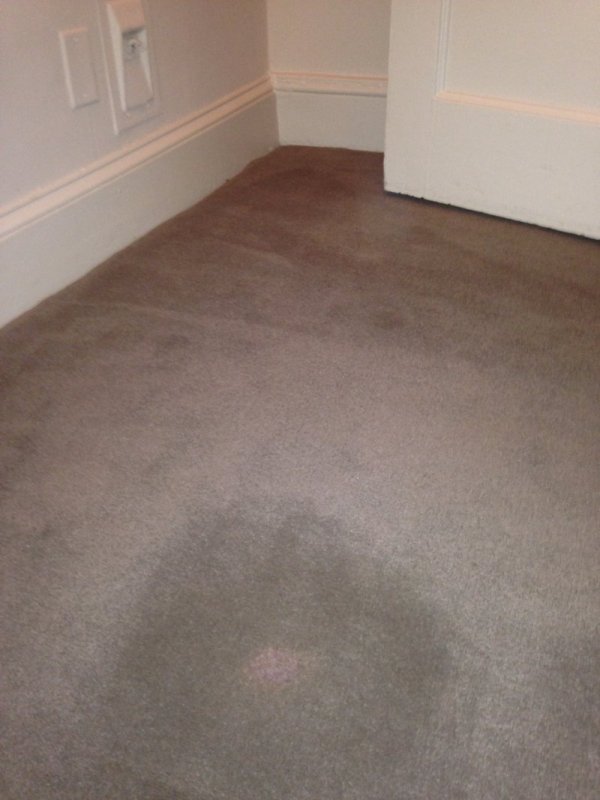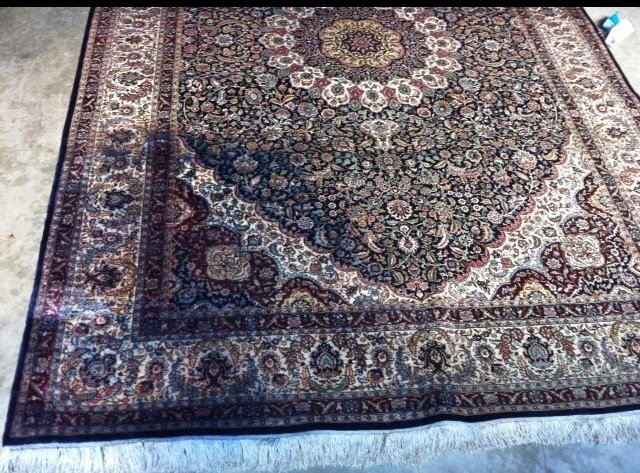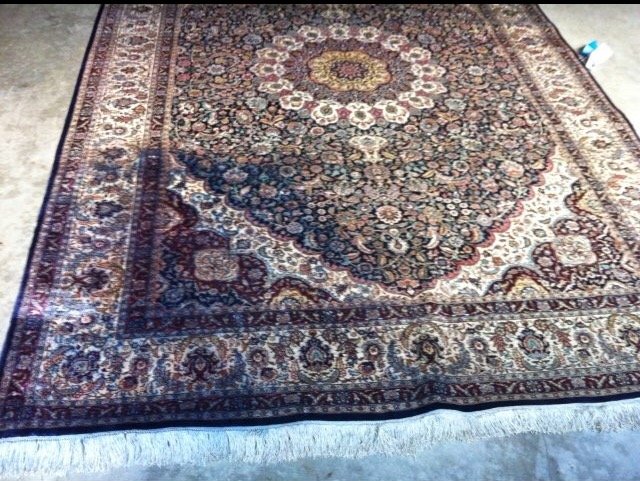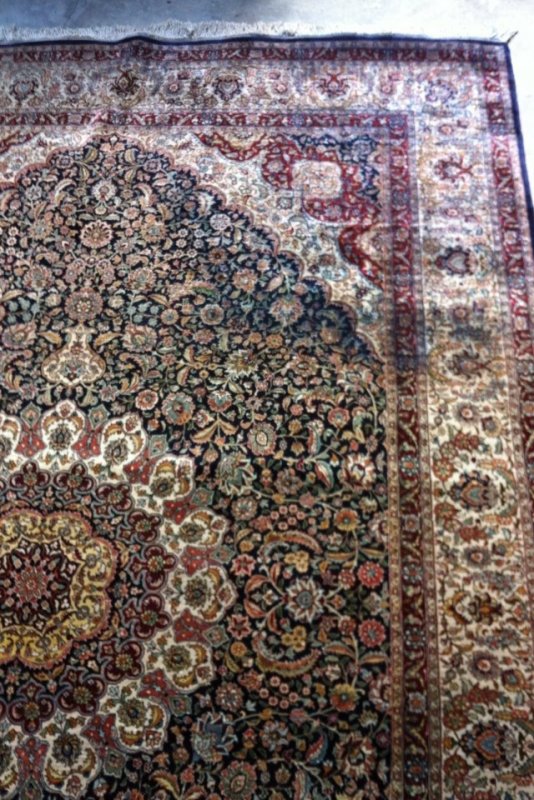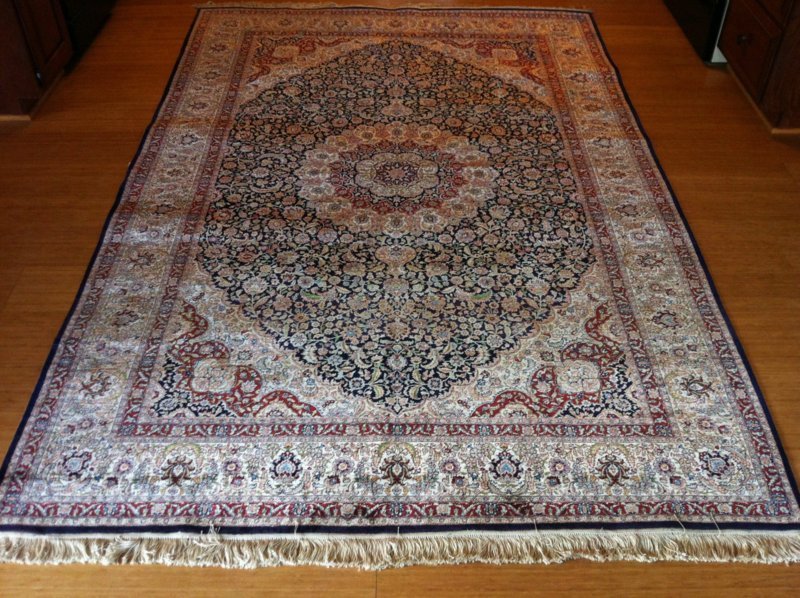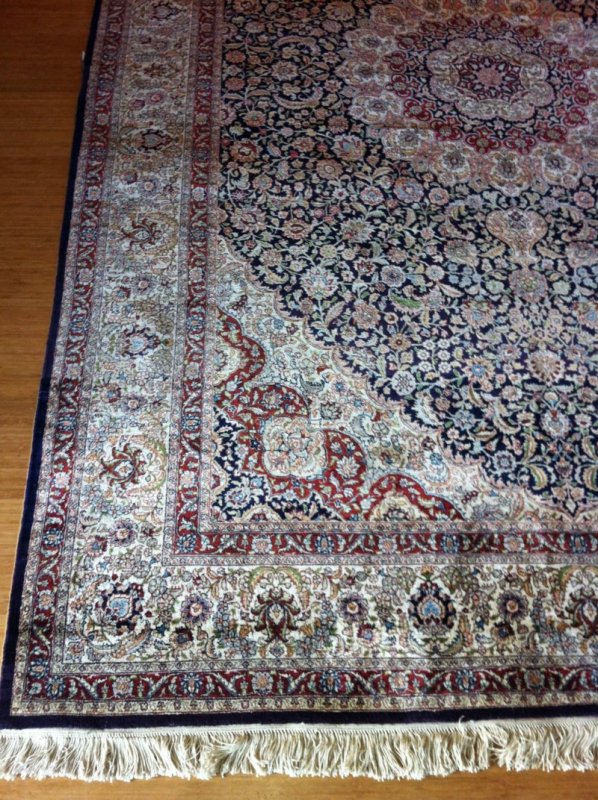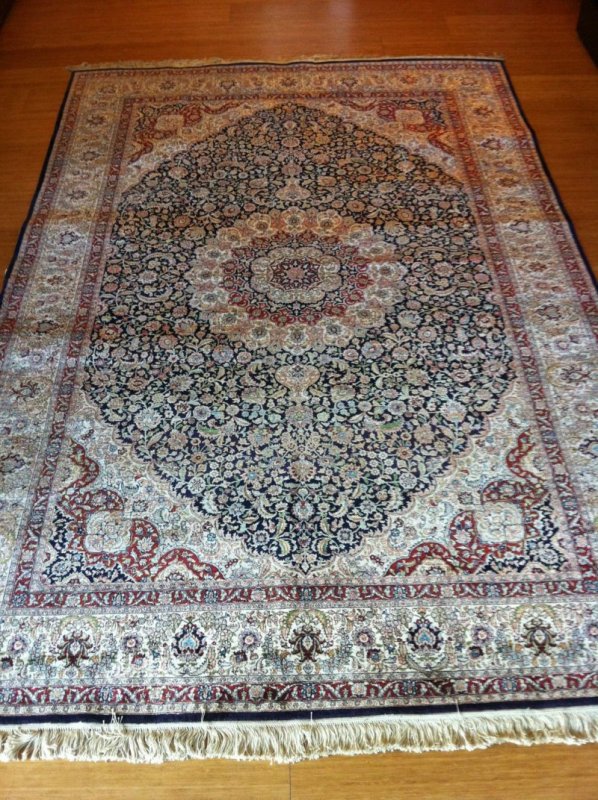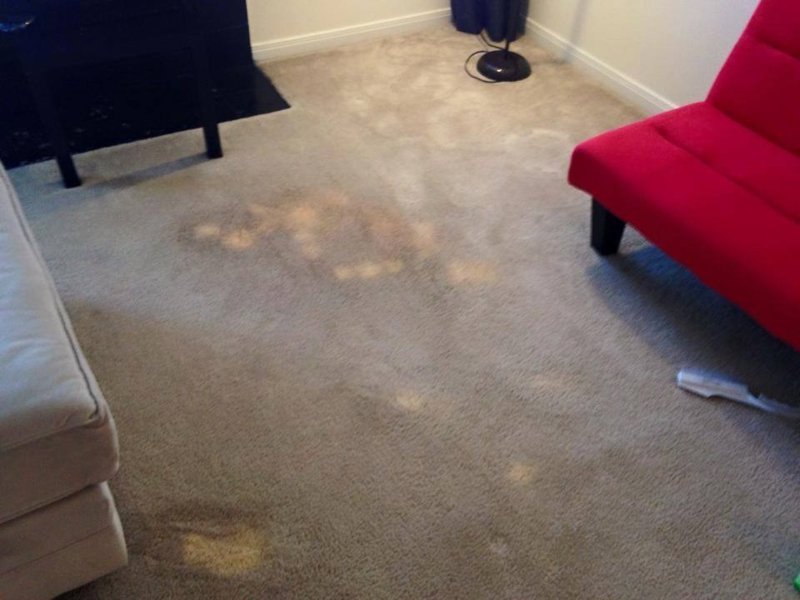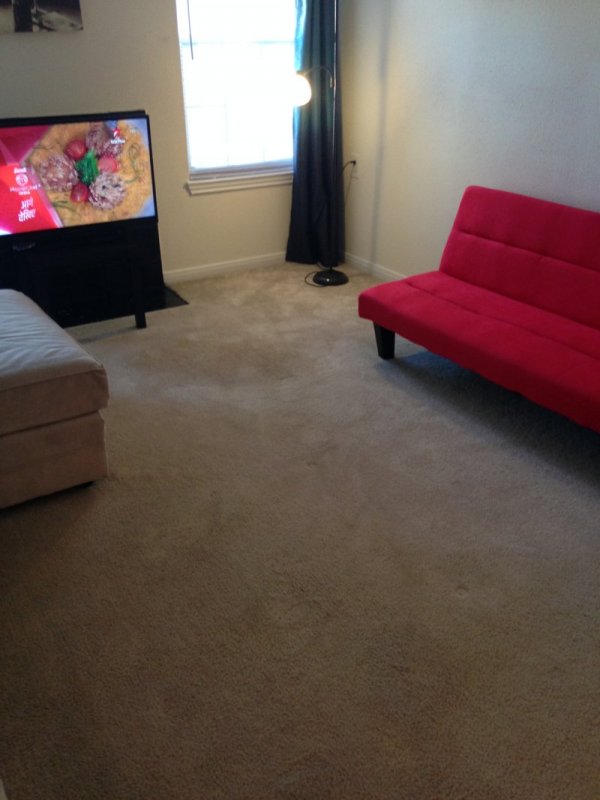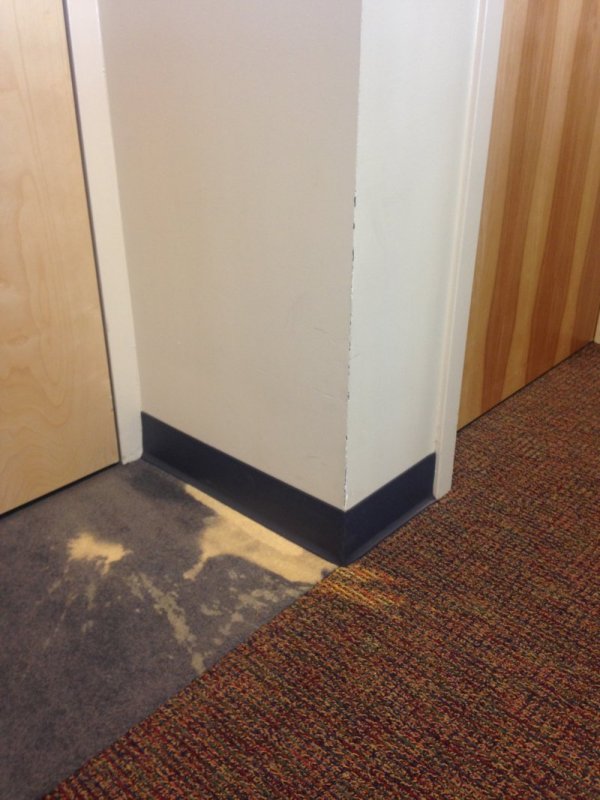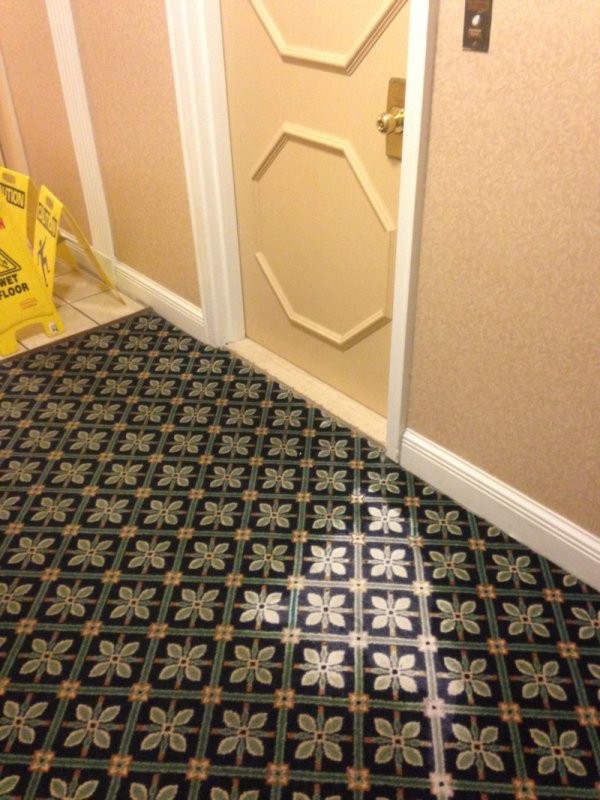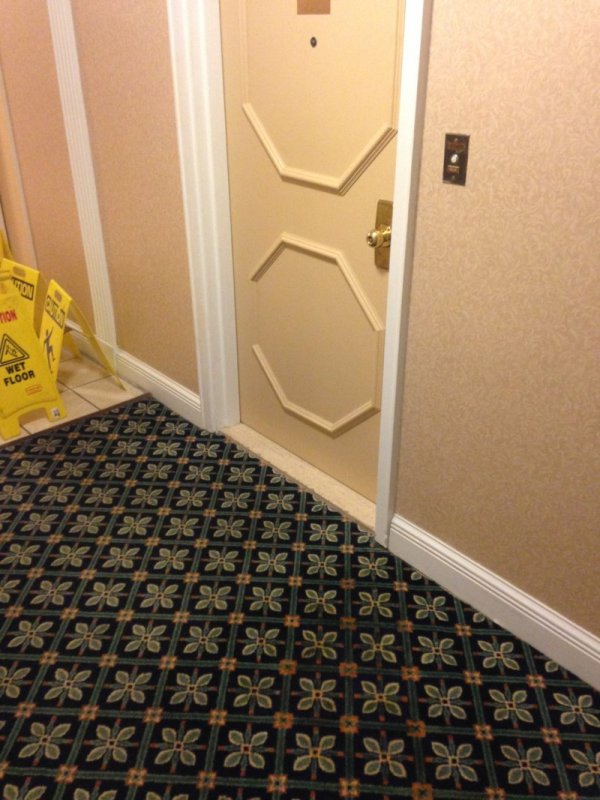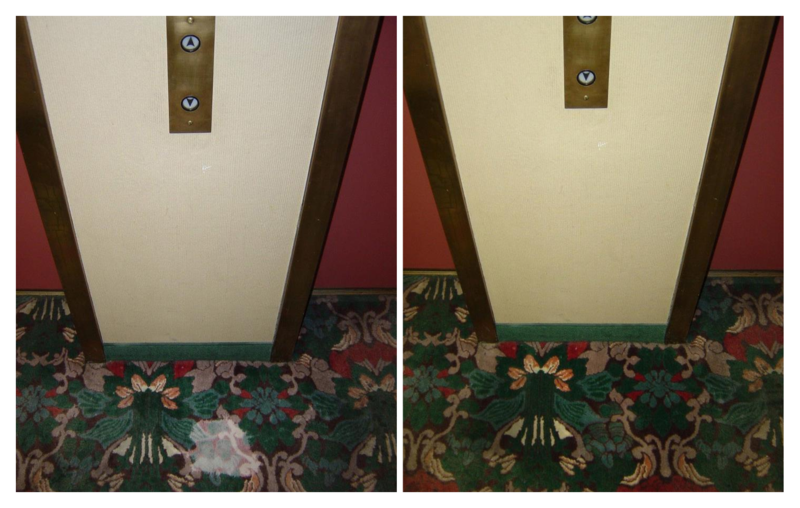Chris Howell
Member
- Joined
- Mar 4, 2016
- Messages
- 431
- Name
- Chris Howell
So whatdya do with hair dye on carpet? Hair dye is one of the most difficult things to remove because the dye actually penetrates the fibers actually penetrates the fibers and goes inside the dye sites. Dye sites are like little pores or pockets on the fibers that hold the color molecules. The dye sites are accessed chemically and thermally. This is why juices such as Kool-Aid, red wine, etc. will frequently causes permanent staining, because these liquids contain a lot of acid which causes the color(s) to penetrate the dye sites. Of course a good red stain remover or heat transfer process will remove these, but much more difficult when dealing with hair dye.
Here's an example of hair dye on a high-grade of nylon carpet in an upscale hotel in Washington, DC.
Nothing would remove the hair dye stains from the carpet, so we applied a diluted bleach and gave it time to work. Once the spot had sufficiently faded out, we neutralized the bleach, then spot-dyed the area to bring it back to a perfect color match.
Note that the carpet was still damp in the last pic, so it looks a bit darker in the surrounding area.
We are able to guarantee the removal of any stain because we have the option of bleaching it out and re-dyeing the area. We are frequently called in to remove stains that no one else has been able to remove because of this option. Of course we are able to charge a premium because no one else was able to remove the stains, so our service becomes an alternative to having to replace the carpet.
Photos below:
1. Hair dye stain on Hotel carpet
2. Diluted bleach applied. Stain begins to fade out
3. Bleach removes stain and carpet's own color
4. Bleach is neutralized
5. Color is added
6. More color is added
7. Spot fully repaired and brought back to original color.
Note: Carpet not fully dry in the last photo
Here's an example of hair dye on a high-grade of nylon carpet in an upscale hotel in Washington, DC.
Nothing would remove the hair dye stains from the carpet, so we applied a diluted bleach and gave it time to work. Once the spot had sufficiently faded out, we neutralized the bleach, then spot-dyed the area to bring it back to a perfect color match.
Note that the carpet was still damp in the last pic, so it looks a bit darker in the surrounding area.
We are able to guarantee the removal of any stain because we have the option of bleaching it out and re-dyeing the area. We are frequently called in to remove stains that no one else has been able to remove because of this option. Of course we are able to charge a premium because no one else was able to remove the stains, so our service becomes an alternative to having to replace the carpet.
Photos below:
1. Hair dye stain on Hotel carpet
2. Diluted bleach applied. Stain begins to fade out
3. Bleach removes stain and carpet's own color
4. Bleach is neutralized
5. Color is added
6. More color is added
7. Spot fully repaired and brought back to original color.
Note: Carpet not fully dry in the last photo


